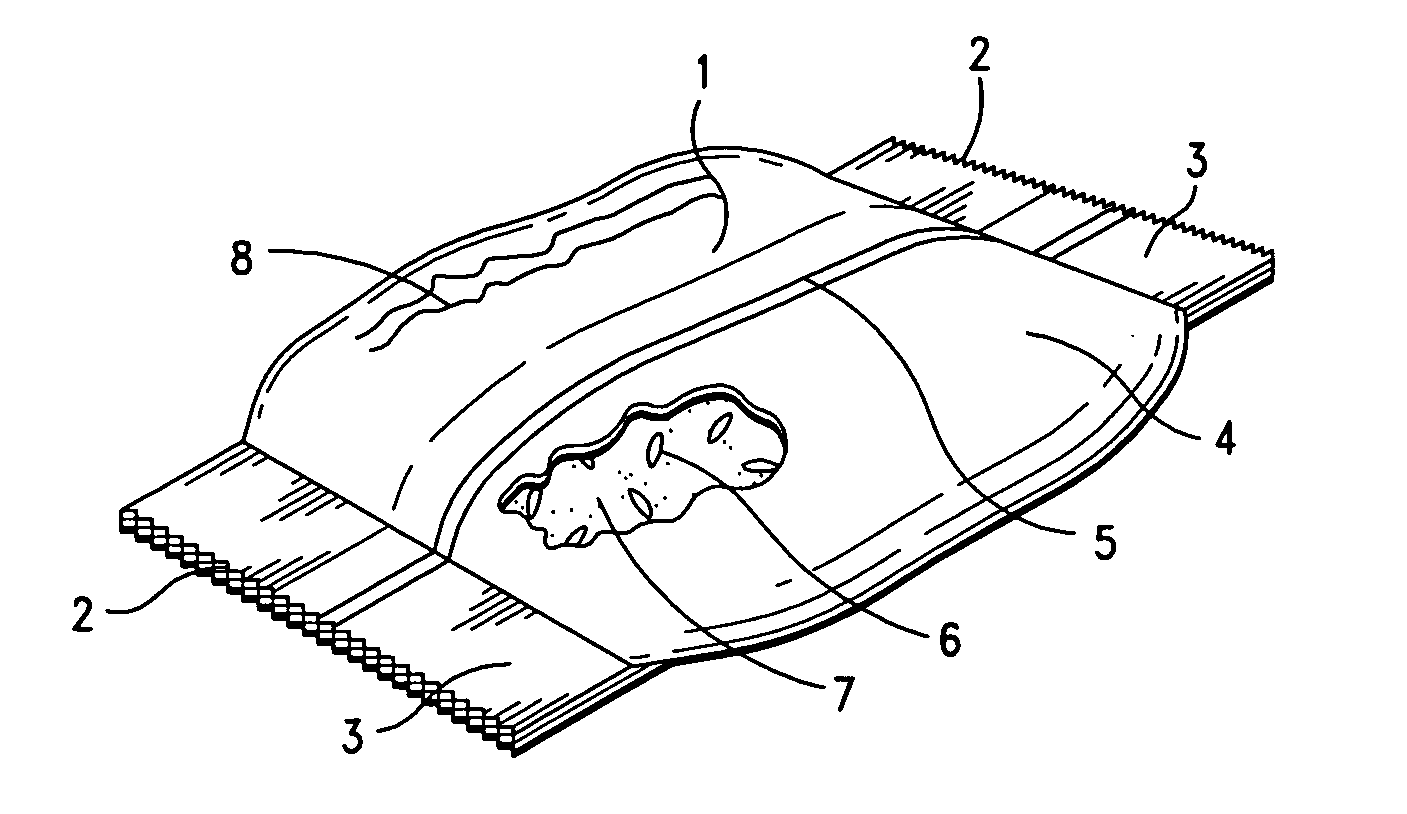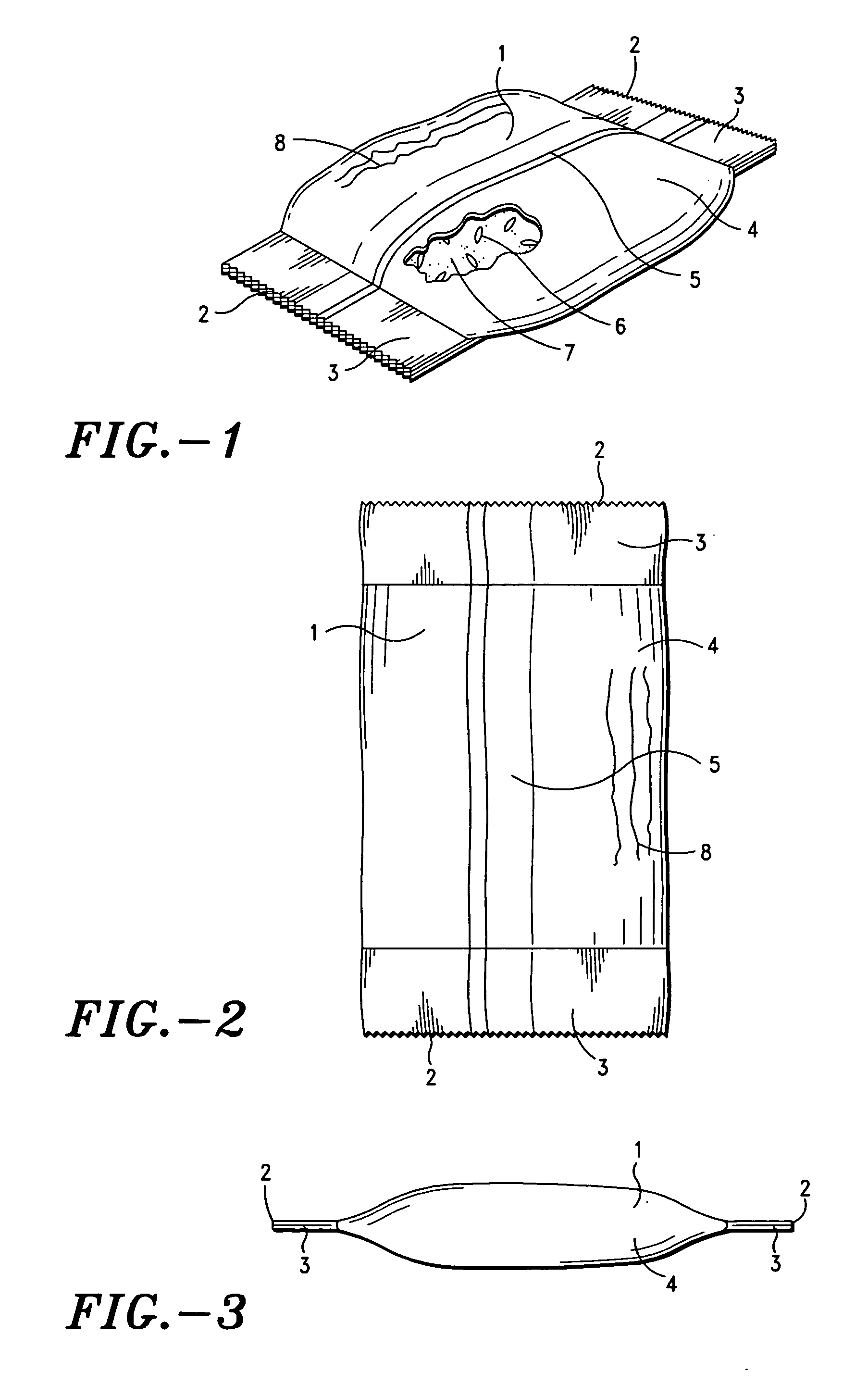In the normal act of playing the game of golf, players often damage the primary playing surfaces (the fairways and tee areas) of the golf course by swinging a club into the turf and removing top portions of the grass and underlying soil, thereby creating a divot.
However, the majority of divots repaired in this manner are unsuccessful as the roots usually have been separated from the leaves or blades of grass.
While traditional divot replacement methodology dictates first using the actual patch of grass and soil to replace the divot, this is not always practical depending on the types of grass and the force / angular dynamics associated with the swing of the
golf club.
Many times there may simply just not be sufficient enough remaining cohesive grass and turf material to repair the divot.
However, as with traditional methodology, this method does not rejuvenate and regrow grass since there is no presence of new seedlings nor additional
soil material to fill the divot.
In addition, this method of replacing divots is time-consuming and inconvenient (providing little additional
advantage over replacing turf material without this device) and summarily is not likely to be practiced nor strictly enforced on the golf course.
The larger containers may weigh upwards of ten pounds when full of sand and
seed mixture while the smaller containers do not carry enough sand and
seed mixture for a full round of golf which may require that numerous containers be carried on the
cart or constant refills.
However, due to distance factors and inconvenience, players often will not make the effort to go back and forth from a freshly made fairway divot to their respective golf carts for sand / seed mix containers, back to the divot for repair, and then back to the golf
cart to replace the sand / seed mix container before proceeding on with the golf round.
This same inconvenience applies at tee areas when there is no container of sand / seed mix alongside the box.
Further, certain tee box sand / seed dispensers only present another inconvenient and inconsistent divot
replacement method that usually involves a
wooden box full of sand seed mix and a scoop.
If there is no scoop for some reason, it is not likely that the golfer will carry the dirty mixture by hand and the divot will go unrepaired.
Unfortunately, this more sophisticated repair methodology of the prior art of applying a sand and
seed mixture to the divot is a cumbersome turf repair
system that involves numerous time-consuming steps.
Some of these devices are so large that they are more practical for use by the golf course grounds keepers and maintenance personnel than by individual golfers and the use of which, in any event, would cause
delay and extra effort by golfers which would hold up play of the following golfers.
Some of the problems and inefficiencies that are inherent in the existing repair or replacement alternatives, and in the techniques and devices and apparatus of the patents associated with the known prior art for divot repair, are that many golfers simply do not replace divots because there is not a convenient method within immediate reach of the golfer while he is out of the
cart or walking on the course, and has addressed and swung at the ball, with which to do so.
The average golfer who walks the course (for example, a golfer that carries a set of golf clubs as opposed to being transported using a gas or electric powered golf cart) is at a serious
disadvantage in terms of convenient divot repair or replacement options.
This is because a golfer that walks the course cannot carry a container that is full of sand / seed mix of a reasonable size to be easily and cleanly utilized.
As mentioned previously, this is not always practical due to time and turf material retrieval constraints.
Further, the exposed seed in the sand seed mix poured into a divot from a sand seed container may be consumed by
wildlife.
While the mixture is inside the sand / seed containers which are carried on the carts, the sand / seed mix will settle out and separate due to the jostling of the containers during movement of the carts with the lighter seed rising to the top thereby reducing the mix consistency and thus the effectiveness of the mixture.
Further, the seed may prematurely germinate in the containers.
Some golfers do not sufficiently fill their divots by improperly measuring the amount of seed / sand mixture required to fill the divot.
The additional equipment which is required to refill canisters may be inconvenient to transport,
time consuming to manipulate, and expensive to acquire.
While seed tapes may be useful in many agricultural contexts, including home gardening and commercial farming, they are not designed to accommodate divot repair on the golf course for numerous reasons including: they are generally strips or sheets of biodegradable paper that lack the volume of material necessary to sufficiently fill a divot; they are designed to be buried in or affixed to the ground or may otherwise be blown or washed away; they are not designed for convenient transport or application, specifically around a golf course.
As such, seed tapes do not represent a convenient nor practical methodology for divot repair.
These devices are useful for gardening and commercial farming, but burial of a device on a golf course during a round of golf is impracticable.
These devices are not sealed nor airtight nor are they soluble or expected to dissolve rapidly in the presence of water.
None of this technology is adaptable to practical golf course divot repair during play by the golfers due to the quantities of materials and sizes of the containers and turf mats involved.
The patents do not mention nor are they adaptable to golf divot repair, and they do not provide a convenient method to repair divots on a golf course.
 Login to View More
Login to View More  Login to View More
Login to View More 

